Château Ausone
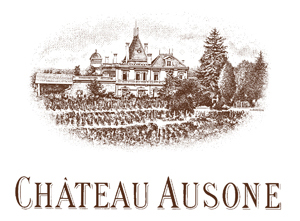
Overview
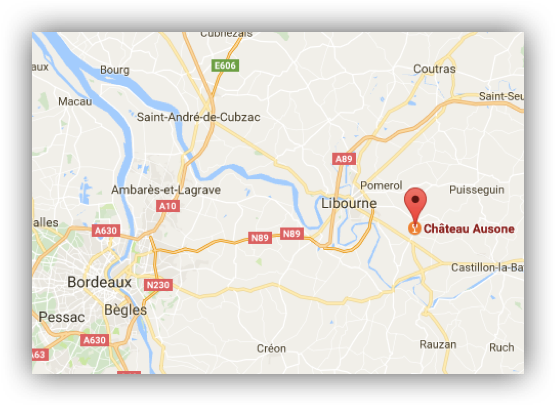
Ausone takes its name from the Roman poet Ausonius who owned over 100 acres of vineyard around Saint Emilion. It is said that he owned a grand villa in “Lucaniac” (the ancient name for the town), although whether it occupied the exact same location as the present vineyard is perhaps a romantic notion.
The vineyard itself covers just 7-hectares on a steep southeast-facing incline, three-quarters on the actual côte and the remainder atop the cellars around the church (you can just see the vines in the photo at the top of the page.) The soil is a mixture of limestone and clay, becoming sandier on the lower reaches where the grapes exhibit slightly lower acidity.
The Terroir
Chateau Ausone possesses one of the most prized terroirs in all of Bordeaux. It is quite hilly with clay limestone soils over a bed of Asteria limestone. The vines are, on average, 50 years old and enjoy a southeastern exposure.
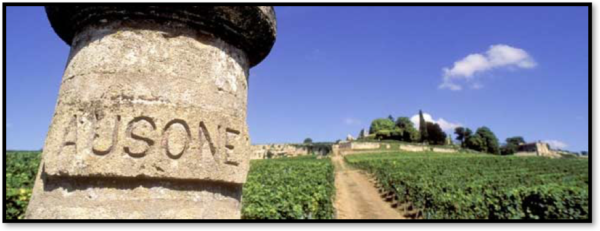
Acreage: 7 Ha
Soil: Clay & Limestone on a bed of Asteria limestone
Grape Varietals: 55% Cabernet Franc, 45% Merlot
Age of the vines: Since many vines escaped the devastating frosts of 1956, the average age is an impressive 45 to 50 years.
Plant-density: 6500-12000 plants/Ha
Average Yield: 32 hL/Ha
Vinification: Traditional; depending on the vintage, fermentation and maceration last between 3-5 weeks in thermoregulated wooden vats
Aging: Up to 2 years in French oak barrels with 100% new wood

Château Ausone Saint-Émilion
Plant Density: 6,500-12,600 plants/ha
Soil: Clay and limestone on a bed of Asteria limestone
Average Age of the Vines: 50 years old
Average Yield: 32 hl/ha
Annual Production: 18,000 bottles
Grape Varieties: 55% Cabernet Franc; 45% Merlot
Vinification: Traditional; depending on the vintage, fermentation and maceration last between 3-5 weeks in thermoregulated wooden vats
Aging: Up to 2 years in French oak barrels with 100% new wood
Serving Temperature: About 15°C
Food Pairings: This wine matches well with many different kinds of meat, as well as Asian dishes, and pasta

Chapelle d'Ausone
Plant Density: 6,500-12,600 plants/ha
Soil: Clay and limestone on a bed of Asteria limestone
Grape Varietals: 50% Cabernet Franc; 50% Merlot
Annual Production: 9,000 bottles
Vinification: Traditional; depending on the vintage, fermentation and maceration last between 3-5 weeks in thermoregulated wooden vats
Aging: Up to 2 years in French oak barrels with 100% new wood
Chateau Baracan
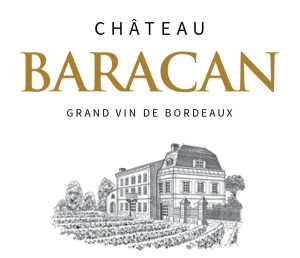
Overview
The Gonfrier family took possession of the 19th century estate of Chateau Baracan in 1989. Situated in the municipal district of Capian, Baracan has a picturesque terroir which produces exceptional, refined wines. The owners have taken great pains to renovate the vineyard, including reworking the drainage systems and introducing new grape varietals.

Chateau Baracan Premieres Côtes de Bordeaux
Location: The municipal district of Capian
AOC: Cadillac Côtes de Bordeaux rouge
Owners: Acquired by the Gonfrier family in 1989
Production Area: 38 ha
Terroir: Clay-gravel slopes
Grape Varietals: 40% Merlot, 40% Cabernet Sauvignon, 15% Cabernet Franc, 5% Petit Verdot
Average Age of the Vines: 20 years old
Viticulture: Traditional; the vines are trained using 2 canes and a flat arch. Controlled grassing and ploughing to encourage biodiversity in the soil; Chateau Baracan was awarded the Haute Valeur Environnementale certification due to its use of sustainable agriculture
Harvest: Manual & mechanical
Vinification: The grapes are destemmed, then pressed and vatted. This is followed by a cold pre-fermentation maceration which lasts about 72 hours. Fermentation and maceration takes place in stainless steel, temperature-controlled tanks for about 20 days.
Aging: Maturation lasts 12 months in oak barrels
Tasting Notes: Deep garnet color. The bouquet is fruity; on the palate this wine is round and dense. Delightfully fresh on the finish.
Food Pairings: Goes well with a variety of meats, either roasted or grilled
Gilbert & Gaillard 2016 : Gold Medal
Concours des vins de Bordeaux 2015 : Silver Medal
Château Bernadotte
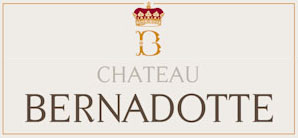
The Estate
Formerly known as Chateau Fournas, this estate was renamed Bernadotte in 1997 after a past owner, Marshal Bernadotte, who was the Sovereign Prince under the rule of Napoleon I. Madame de Lencquesaing, owner of Chateau Pichon Lalande at the time, acquired Chateau Bernadotte in 1997 and proceeded to renovate every aspect of the estate. It is currently owned by the King Power Group who took possession in 2012.

Chateau Bernadotte Haut-Médoc
Production Area: 35 ha
Soil: Gravel, sand, clay
Grape Varietals: 50% Cabernet Sauvignon, 44% Merlot, 4% Cabernet Franc, 2% Petit Verdot
Average Age of the Vines: 25 years old
Plantation Density: 6,500 vines per hectare
Vinification: In stainless steel, temperature controlled tanks; malalactic fermentation in tank
Aging: 12-18 months in French oak barrels (30% new wood)
Annual Production: 10,000 cases
Serving Temperature: 15°C
Food Pairings: Pairs well with most meats, braised or grilled. Also perfect when served with hearty fish, pasta, and Asian dishes
Chateau Beychevelle
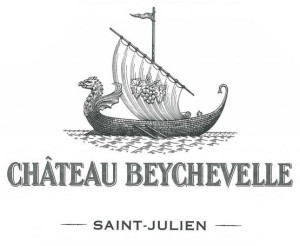
The Estate
Known as the “Versailles of Bordeaux,” Chateau Beychevelle is located in the St. Julien appellation. It is one of the most stunning chateaus in Bordeaux due to its remarkable architecture and beautiful gardens. Chateau Beychevelle was originally constructed in 1565 by Bishop François of Foix-Candale, after which it came into the possession of the Duc d’Eperon, Admiral of France at that time. It was this Duke who originated the name of the Chateau; whenever a ship passed close by the estate, the Duke demanded that they “Baisse-Vaille,” or “lower their sails” to show their respect to the him. “Baisse-Vaille” eventually evolved into “Beychevelle,” which has been the name of the Chateau ever since.
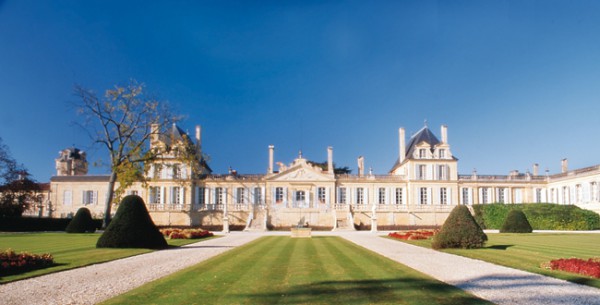
The second Duc d’Epernon was a great patron of the arts-a legacy that continues to this day-and legend has it that at one time he invited a troupe of actors to stay and perform at the château, and among them was Jean-Baptiste Poquelin, otherwise known as Molière.
In the years following, the property had several owners. In 1970, Aymar Achille-Fould took posession, and in 1984, he gained a partner for the first time: the Grands Millésimes de France (GMF) group. That trend continued in 1988 when the GMF group partnered with the Japanese Suntory Company. They were already familiar with Bordeaux, as they owned the neighboring estate, Chateau Lagrange. In February 2011, Chateau Beychevelle took on new owners when Suntory along with Pierre Castel purchased the St. Julien estate.

Saint-Julien 4ème Grand Cru Classé
The Vineyard: Chateau Beychevelle covers an area of 250 ha, of which 90 ha are planted with vines. The closeness of the Gironde river, which can be seen from the front steps of the Château, has a protective, regulating effect on the climate that is vital for the production of exceptional wines. The vineyard is planted with 52% Cabernet Sauvignon, 40% Merlot, 5% Cabernet Franc, and 3% Petit Verdot. Plant density is about 8,300 to 10,000 vines/ha. On average, the vines are 30 years of age.
The Soil: The terroir consists of deep Garonne gravel from the Gunzian period, ideal for Cabernet Sauvignon.
Vinification: The wine of Chateau Beychevelle is vinified in a combination of temperature controlled, stainless steel, and concrete vats. Malolactic fermentation takes place in tank. It is then aged in an average of 50% new French oak barrels for about 18 months.
2009 Reviews: “The finest Beychevelle since the 2003 and probably since the 1982, Beychevelle’s 2009 is opaque purple in color, with a beautiful, floral nose intermixed with black currant fruit, licorice, cedar wood and Christmas fruitcake. Full-bodied yet still elegant and pure, this wine has velvety tannins, a broad, savory mouthfeel, and a very long finish. There is plenty of tannin behind the extravagant fruit, glycerin and texture of this wine, but it is largely concealed. This wine could actually turn out to be even better than my relatively conservative tasting note. Anticipated maturity: 2020-2042.”-93pts, Wine Advocate
Château Bouscaut
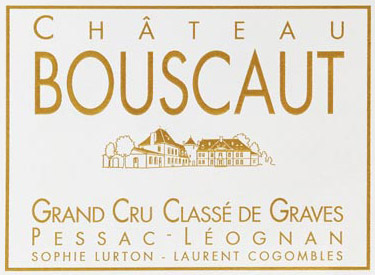
Overview
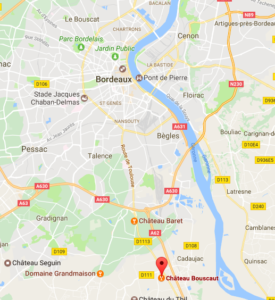
Château Bouscaut is one of the 6 Grands Crus Classés of Graves for both its white and red wines, in the Pessac-Léognan appellation. Sophie Lurton has been running Bouscaut, along with husband Laurent Cogombles for over 20 years.
Situated 34 m above sea level, Château Bouscaut’s vineyards spread out facing due south on the highest part of Cadaujac, a commune on the left bank of the Garonne River.
Château Bouscaut’s second-label wine is Les Chênes de Bouscaut. Château Lamothe-Bouscaut and Château Valoux are also part of the Bouscaut galaxy. They are all situated in the commune of Cadaujac.
History
Bouscaut’s vineyard has existed since the 17th century on the commune of Cadaujac, a Graves appellation at that time. Called Haut Truchon, it was renamed Château Bouscaut after the name on the land register in 1881 .
The various owners throughout the twentieth century were very dedicated to improving and transforming both the vineyard and the château. In the thirties, the domain was cited as being a model estate by the Chamber of Agriculture and a race horse called Château Bouscaut won first prize in the coveted Maisons Lafitte race. In the same period, a tower was added to the main residential building and cellars were erected next to it.
The winner of many medals, the wines of Château Bouscaut were widely recognized. Consecration came in 1953, when Bouscaut was awarded the envied status of Graves Cru Classé, for both its white and red wines.
In 1962, the château was completely destroyed by a fire while the cellars remained untouched. The owner, Victor Place, oversaw its reconstruction, to the exact original plans, before selling it to a group of investors from New York in 1968. The new owners brought in the directors of Haut-Brion to manage it.
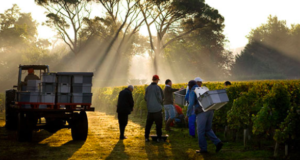 Bouscaut was then acquired in 1979 by Lucien Lurton, a well known Bordeaux winemaker who already owned at least ten other prestigious châteaux in appellations such as Margaux (Brane-Cantenac) or Barsac (Climens),…. This passionate viticulturist recognized the potential and exceptional terroir of Château Bouscaut.
Bouscaut was then acquired in 1979 by Lucien Lurton, a well known Bordeaux winemaker who already owned at least ten other prestigious châteaux in appellations such as Margaux (Brane-Cantenac) or Barsac (Climens),…. This passionate viticulturist recognized the potential and exceptional terroir of Château Bouscaut.
Sophie Lurton, Lucien’s daughter has been looking after Bouscaut since 1992. Laurent Cogombles, her husband, an agronomist, has also been very involved since 1997. Laurent is also the current President of the Appellation Pessac-Léognan.
Today, Château Bouscaut continues its journey, led with enthusiasm and innovation by its owners and team.
Château Bouscaut has recently joined a program of environmentally friendly practices.
Wine tourism is permanently evolving with various workshops available to do and the house at Château Valoux has been available for rental since 2011.
The Vines
The majority of the vines are red, covering 47 hectares, consisting of 55% Merlot, 40% Cabernet Sauvignon, and 5% Malbec. The remaining 7 hectares are divided equally between Semillon and Sauvignon Blanc. Overall, there is a vine density of 7,200 vines/ha. The average age of the vines is 40 years -although there are some that are over a hundred years old.
Vinification
The harvest is manually picked and put into small baskets, followed by temperature controlled fermentation (24-28ºC) in stainless steel and cement vats for the reds, and a cooler ferment (18-22ºC) in oak barrels (50% new) for the whites. The reds will see up to 18 months in oak, the whites up to a year with regular bâtonnage.

Château Bouscaut Pessac-Léognan
Appellation: Pessac-Léognan
Owners: Sophie Lurton & Laurent Cogombles
Average Age of the Vines: 35 years old
Soil: Clayey-calcareous and gravel
Grape Varieties: Merlot 48%; Cabernet Sauvignon 42%; Malbec 10%
Average Production: 40 hl/ha
Alcohol Content: 14.5%
Vinification: Fermented in stainless steel and concrete tanks, aged in oak barrels (45% new oak)
Food Pairings: Enjoyable with game birds, various meats, and soft cheese such as a good Camembert.
2008 Reviews: “Rich, balanced wine that offers a big, opulent character, the fruit full of black berry juice, a layer of dried figs and final chunky tannins.”-92pts, Wine Enthusiast

Les Chênes de Bouscaut Rouge
Appellation: Pessac-Léognan-Grand vin de Graves (Bordeaux)
Town: Cadaujac
Owners: Sophie Lurton & Laurent Cogombles
Soil: Clay on limestone bedrock
Average Age of Vines: 35 years
Average Production: 40 hl /ha
Grape Varieties: 72% Merlot; 28% Cabernet Sauvignon
Vinification: Stainless steel tanks and concrete with temperature control by water circulation
Food Pairings: Seafood such as sole, bar, saint-pierre, cabillaud, salmon, trout, etc. White meat such as poultry, veal, sweetbreads. Roasted or braised red meat. Cheeses with character, refined with strong aromas. Hard cheeses like cantal, tomme, and comté.
Château Boyd-Cantenac
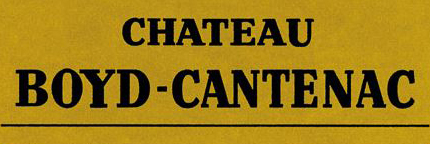
The Estate
Established in 1754 by Jacques Boyd, a man of Irish descent, the estate was purchased in 1806 by John Lewis Brown who was related to the Boyd family by marriage. Since the wines from Boyd-Cantenac had been recognized and traded for a century, in 1855 the château was classified Third Growth, in the Grand Cru classification of Bordeaux wines. The estate belonged to the Ginestet family, owners of Chateau Margaux, before coming to the current owners in the early 1930s. After the economic crisis which greatly affected the vineyards after the first world war, Pierre Guillemet brought Boyd-Cantenac back to life in the 1960s. Not a follower of changing and short-lived fashions, Boyd-Cantenac remains true to the style of traditional Margaux wines.

Château Boyd-Cantenac Margaux 3ème Grand Cru Classé
Owners: Famille Guillemet
Location: Cantenac
Appellation: Margaux
Classification: 3ème cru classé
Soil: Sand, gravel
Production Area: 17 ha
Average Age of the Vines: 35 years
Average Production: 70,000 bottles
Grape Varieties: Cabernet Sauvignon 67%, Merlot 20%, Cabernet Sauvignon 7%, Petit Verdot 6%
Harvest: The harvest, beginning with the Merlot, the most precocious of the varietals, is picked manually in order to allow rigorous selection. The harvest lasts anywhere from 10 to 25 days.
Vinification: Fermentation and maceration take place in both cement vats and stainless steel tanks, under strict surveillance and with numerous pumping-over. Maceration varies in length, depending on the characteristics of individual vintages, anywhere from around 8 to 35 days. The malolactic fermentation, takes place, in part, in barrels.
Aging: Traditionally, aging takes place in split oak barrels, as opposed to barrels made from sawed staves. The wines evolve for 12-24 months. During their stay in barrels, they separate from their lees, see their aromas develop, form their structure, and become stabilized.
Tasting Notes: Dark and dense, with complex aromas of fruit, enhanced by the barrel and bottle aging. In the mouth, the entry is supple and progressive; then comes a mouth filling volume, and at the end, the ripe tannins assure excellent aging capability. The general balance is always harmonious, aromatic, mouth filling, and elegant, characteristics of the traditional Margaux.
Chateau Branaire-Ducru
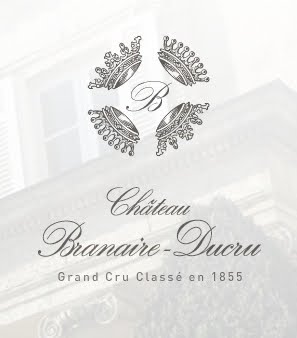
The Estate
Chateau Branaire-Ducru was originally a part of Chateau Beychevelle, but in the 17th century it split off from that estate. The name “Branaire-Ducru” is derived from Jean Baptiste Braneyre and Gustave Ducru, former owners of the estate. On the label there are 4 crowns which stand for the last 4 members of the Duluc family to have owned the estate–a marquis, a viscount, a count, and a countess. Château Branaire-Ducru is a member of the Bordeaux Union of Grands Crus, of Médocʼs Council of Crus Classés and of the Bordeaux Wine Academy. It was awarded 4th growth classification in 1855.

Château Branaire-Ducru, Saint-Julien 4ème Grand Cru Classé
Owner: Family group managed by Patrick Maroteaux, purchased in 1988
Winemaker: Jean-Dominique Videau
Consulting Oenologist: Jacques & Eric Boissenot
Location: The estate is situated in the southeastern most part of Saint-Julien. It is neighbors with Chateau Beychevelle, which lies between Branaire-Ducru, the Gironde, and Château Saint-Pierre. The vineyards run west-east in several plots close to the château.
Vineyard Area: 60ha, producing 300,000-350,000 bottles; Maroteaux has increased size of vineyard by 10 ha since purchase
Soil: Deep quaternary gravel with a clay subsoil
Grape Varieties: 70% Cabernet Sauvignon, 22% Merlot, 5% Cabernet Franc, 3% Petit-Verdot
Average Age of the Vines: 35 years
Rootstock: 101/14, 3309 Riparia Gloire
Plant Density: 6,700-10,000 vines/ha
Cultivation: Sustainable viticulture system; traditional plowing between the rows, depending on soils and the behavior of the vines. Trellising and canopy management according to vineyard density and soil composition. New vineyards are planted with vines selected in the old vineyards and produced in the nursery.
Harvest: The entire vineyard is harvested by hand; harvest date for each plot is based on phenolic analysis and grape tastings.
Vinification: Fermentation takes place in a modern, well-equipped cellar. The must and juice is fed into the cellar by gravity rather than pump to begin its fermentation process in stainless steel tanks at a temperature of about 26-28 °C. Maceration lasts about 3 weeks, a period of time determined by tastings and adapted to each tank.
Aging: In oak barrels for 16-20 months with 60-65% new oak. The wood for the barrels is selected in various French forests according to their flavor and tannins. Traditional racking without pumping over. Fining in barrels with egg whites.
Annual Production: 350,000 bottles
2015 Reviews: “This family-owned estate has produced a structured and dark wine with great concentration balanced by acidity and pure, creamy fruit. It is a wine with a good future. The aftertaste leaves juicy acidity and firm tannins.” – 95pts, Wine Enthusiast

Duluc de Branaire-Ducru
*Second wine of Chateau Branaire-Ducru, named after the family who owned Branaire-Ducru in 1855 and who built the current château”
First Production: 1998
Average Age of Vines: Under 15 years
Grape Varietals: Cabernet Sauvignon, Merlot, Cabernet Franc, Petit-Verdot
Alcohol Content: 12.5%
Vinification: Stainless steel tanks with temperature control. Size of tanks adapted to size of vineyard plots. Tanks are filled using gravity. First modern winery to use the old-fashioned gravity flow system starting in 1991.
Fermentation Temperature: 26-28 °C
Maceration: 3 weeks, determined by tastings and adapted to each tank. The blending is early, before the end of February following the harvest.
Maturation: Aging in oak barrels for 16-20 months with 60-65% new oak. Wood is selected from various French forests according to its flavor and tannins. Light toasting respecting the wineʼs fruit and aromatic purity. Traditional rackings without pumpings. Fining in barrels with egg whites.
Tasting Notes: Velvety, ruby red color. On the nose, the fruity texture is suave and expressive, supported by notes of spice and smoke. The palate mirrors the notes in the bouquet; the texture is velvety with distinct tannins.
Food Pairings: Pairs well with meat such as quail and veal, and cheeses like Brie or Tomme.
Serving Temperature: 18°C
Cellaring Potential: Now until 2024
2014 Reviews: “Fresh and approachable in feel, with plum compote and blackberry reduction notes laced with licorice and violet hints. The moderate structure is brambly in feel. The fruit wins out easily on the finish.” – 89pts, Wine Spectator
Château Brane-Cantenac
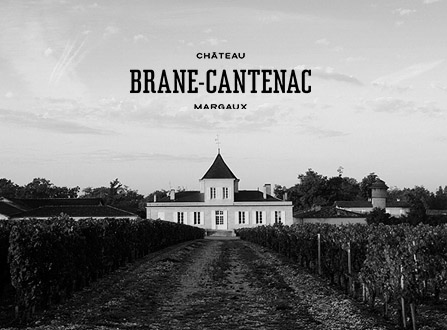
Overview
Château Brane-Cantenac is a winery in the Margaux appellation of the Bordeaux wine region of France. The wine produced here was classified as one of fifteen Deuxièmes Crus (Second Growths) in the original Bordeaux Wine Official Classification of 1855. The estate also produces a second wine named Baron de Brane, a label named Château Notton, and a generic Margaux.
History
The origins of Brane-Cantenac date back over 250 years. Known as “Hostein” in the 18th century, this great wine estate was bought by the Gorce family, and produced one of the Medoc’s most renowned wines long before the 1855 classification. The name of the second wine, Baron de Brane, pays hommage to the famous Baron Jacques-Maxime de Brane, the “Napoléon des Vignes”, owner of the property in the 19th Century. For the past 4 generations, the Lurton family has been at the helm; they are devoted stewards who continue to ensure that the property flourishes, producing wines of the greatest quality. Since 1992, Henri Lurton has continued the journey that his father and ancestors began. Although a proponent of innovation and new technology, Henri is careful never to lose sight of the traditional values that remain an inherent part of Brane’s identity. Above all, he is proud of the unique terroir, and recognizes the need to treat the soil, vines, and grapes with immense respect.

Château Brane-Cantenac Margaux
Production Area: 75 hectares in the Margaux appellation.
Terroir: There are 3 main terroirs on the estate: the first and the most valued is a large sweep of gravel in front of the château at the top of the Margaux-Cantenac plateau. The plateau de Brane has a thick layer of surface gravel, which provides both radiant heat to the vines as well as excellent drainage. The second section is centered around and behind the château; here there is still gravel, but a higher proportion of sandy soil, and no clay. The third section is on the other side of the Route d’Arsac; this is La Verdotte, a 10-hectare vineyard planted 35 years ago; here the soil is a gravelly sand again. There is a fourth vineyard, Notton, a 13-hectare plot of coarse gravel over clay, and more distant from Brane-Cantenac than the other vines.
Plantation Density: 8,000 vines per hectare
Average Age of the Vines: 35 years old
Grape Varieties: Cabernet Sauvignon covers 55% of the vineyard, with 40% Merlot, 4.5% Cabernet Franc, and 0.5% Carmenère
Harvest: The fruit is picked by hand with typical yields around 45 hl/ha, and then transported to the cellar using the Air Tec system which cushions the fruit, protecting it from damage with its pneumatic suspension. The freshly harvested fruit enjoys a cold soak; for wet vintages, the team uses concentration methods, reducing the water content of the must by vacuum extraction.
Vinification: The fermentation is induced by inoculation with yeast, and in the first few vats there may also be contemporaneous inoculation with malolactic bacteria. The fermentation is naturally temperature controlled, and may last between 7 and 10 days. As it progresses, the wine can see a lot of handling, not only pumping over but sometimes pigeage and even délestage. The fruit will see a maceration lasting between 20 and 30 days before pressing using two pneumatic presses, and both the free-run and press wines are then fed into barrels, using 60-70% new oak, ready for malolactic fermentation.
Baron de Brane
Overview: The name of the second wine honors Baron Hector de Brane, who owned the estate in the 19th century. Blended from vats carefully selected for their suppleness, it is aged just like the First Wine, but for a 12-month period.
Harvest Dates: September through October
Average Yield: 41 hl/ha
Percent of First Wine Produced: 33
Grape Varieties: Cabernet Sauvignon, Merlot
Barrel Aging: 12 months in 20% new French oak
Cellaring Potential: 10-15 years. At its best from 2015 onwards.
Tasting Notes: Attractive dark red hue with a highly aromatic nose typical of Margaux. In the mouth, a tight, smooth attack with a very fine balance of delicateness and soft, rounded tannins.

Margaux de Brane
Overview: Henri Lurton selects the youngest plots from the vineyard for Margaux de Brane. A silky, fruit-driven wine with impressive roundness and red fruit flavors, the wine is accessible in style. It offers an introduction to the wonders of the Margaux appellation and in particular to the signature style of Brane.
Grape Varieties: Merlot, Cabernet Sauvignon
Average Yield: 44.8 hl/ha
Aging: 12 months in cellar
Cellaring Potential: 5-10 years
Winemaker Notes: “Very expressive nose, bursting with strawberry and cherry aromas, with floral and vanilla hints. Sweet and subtle attack on the palate, very round bodied, with a velvety texture and a long aromatic finish. Charming wine with a lot of freshness and lovely soft tannins.”
Château Brown
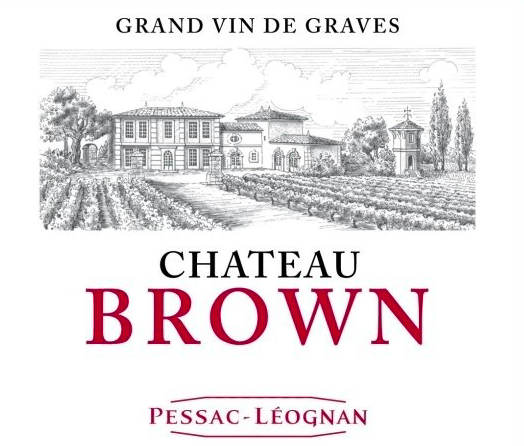 History
History
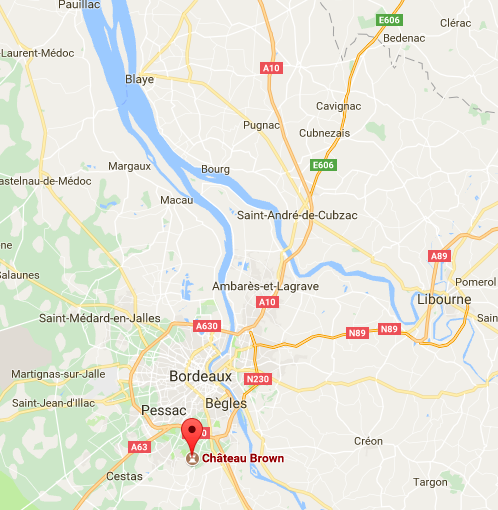
The history of BROWN goes back almost one thousand years, with traces of vines here as early as the 12th century. Château Brown owes its name to a rich Scottish wine trader, John Lewis Brown, who settled in Bordeaux shortly after the Revolution, in 1795. In 1884, at the Amsterdam Universal Exhibition, Château Brown won a gold medal alongside Château Mouton, Château Leoville-Poyferré, Château Pontet Canet… Then, through the decades and successive owners, the estate had moments of glory and of oblivion through to the 1930s. Despite its long history among the great Bordeaux wines, it was only at the end of the 20th century that Château Brown was finally restored to glory. Guided by cereals-industry businessman Bernard Barthe, who became its owner in 1994, the estate undertook a genuine renaissance with a programme of considerable investments in the vines and facilities.
To make a name in the Pessac-Léognan appellation and among the prestigious wines of Bordeaux more generally was the ambition of the Mau family when it bought the estate at the end of 2004, in association with Dutch businessman Cees Dirkzwager. Following in the footsteps of the previous owner, Jean-Christophe Mau conducted a quality-focused strategy and succeeded in winning over wine critics and the national and international press, while working to control distribution of his wines on the Bordeaux marketplace – the traditional distribution circuit for Bordeaux Grands Crus.
Today, as Jean-Christophe Mau celebrates his tenth vintage in 2014, the quality of his work is lauded by all for its professionalism and consistency from one vintage to the next. The white wines of Château Brown feature among the best in Bordeaux while the reds are safe bets among the Bordeaux Grands Crus and widely recognized as flagships of the Pessac-Léognan appellation.
The Terroir
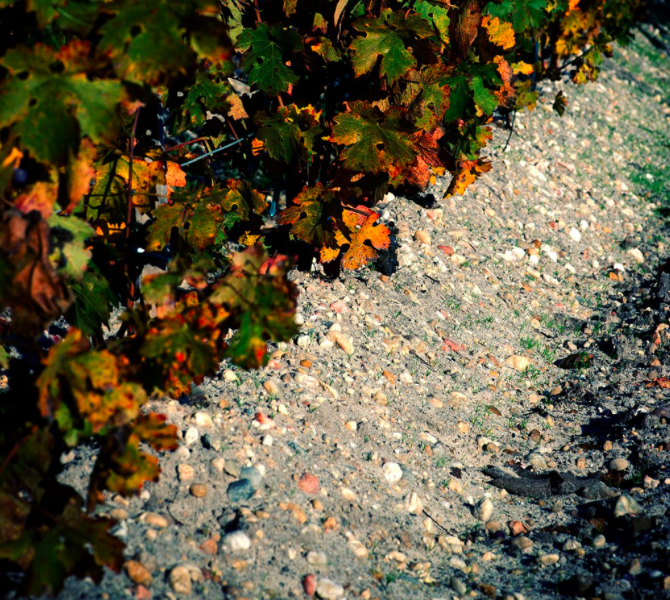 In the Northern Graves – the oldest winegrowing terroir in Bordeaux dating back 2,000 years – Château Brown lies in the heart of the Pessac-Léognan appellation.
In the Northern Graves – the oldest winegrowing terroir in Bordeaux dating back 2,000 years – Château Brown lies in the heart of the Pessac-Léognan appellation.
Bordered by vast forests and built-up areas (the towns of Gradignan, Villenave d’Ornon and Léognan), the vineyards enjoy a micro-climate that is ideal for the grape ripening process and therefore the quality of the wine.
Château Brown covers some 59 hectares, including 29 hectares of vines in a single stretch: 24.5 hectares for reds and 4.5 ha for whites. For the red wines, the vineyard comprises a majority of Cabernet Sauvignon (55%) and Merlots (40%), plus 5% of Petit Verdot. The varieties on the plots dedicated to white wines are 70% Sauvignon and 30% Semillon.
The vineyard is planted with a density of 7,400 vines per hectare on two gravel ridges, one in the northern half of the estate and one in the south, rising to a height of 23m. The highest plots of deep gravel with the very best drainage and exposure to the sun are dedicated to Cabernet Sauvignon, while Merlot is planted on the clay-gravel soils. The vines reserved for making white wines are planted on the soils with the most sand and clay.
The terroir as a whole comprises a majority of fine gravel mixed in with alios, a sandy soil with iron. Château Brown has been actively engaged since 2012 in a sustainable agriculture process, gradually introducing an Environmental Management System into its daily work, and in July 2014 was awarded ISO 14 001 registration. Reduced use of plant protection products and the installation of bee hives alongside the vines are two examples of this.
The BROWN vineyard is constantly evolving: each plot is drained and examined with care before being replanted. This focus on excellence also applies to all the work on the vines, which is adapted with care to each vintage: ploughing is given preference over use of weed-killers to enhance aeration of the soils and encourage deep vine root development, thus avoiding water stress in very hot years. Yields are controlled and limited to 42 hectolitres per hectare for reds and 38 for whites (ten-year average). These yields and the good health of the vines are the result of work carried out throughout the vegetation cycle of the vine, again adapted to the conditions of the vintage: pruning, bud removal, leaf stripping and green harvesting.
The grapes are harvested by hand, of course, using small trays, sometimes in several successive operations as the grapes reach perfect ripeness. Red and white grapes alike are sorted on the vines by the fifty-or-so harvesters employed each year.
Vinification
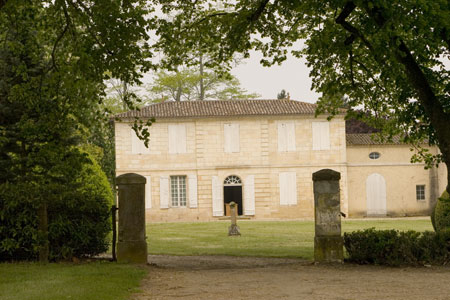 The reds are sorted twice by an average of 6 workers: once to sort the bunches before de-stemming, then once on the vibrating table to eliminate any grapes that are not up to standard, along with any leaves or petioles that still remain. This sterling work is repeated each year to ensure that the wines are perfectly respectful of the fruit. Plot selection among the 29 hectares on the estate allocates an average of 70% of the harvest to the Grand Vin (80,000 bottles of red, 20,000 bottles of white) and 20% to the second wine. The grapes for the second wine are identified plot by plot, picked by hand just like those for the Grand Vin, and enjoy the same lavish care in vineyard and winery alike: harvesting by hand, careful sorting in the vathouse, maturing in French oak barrels…
The reds are sorted twice by an average of 6 workers: once to sort the bunches before de-stemming, then once on the vibrating table to eliminate any grapes that are not up to standard, along with any leaves or petioles that still remain. This sterling work is repeated each year to ensure that the wines are perfectly respectful of the fruit. Plot selection among the 29 hectares on the estate allocates an average of 70% of the harvest to the Grand Vin (80,000 bottles of red, 20,000 bottles of white) and 20% to the second wine. The grapes for the second wine are identified plot by plot, picked by hand just like those for the Grand Vin, and enjoy the same lavish care in vineyard and winery alike: harvesting by hand, careful sorting in the vathouse, maturing in French oak barrels…
In the winery, some thirty small-capacity temperature-controlled vats (between 50 and 130 hL) are used to vinify the grapes variety by variety, plot by plot, with cutting-edge temperature control. Each batch is vinified separately for greater precision. The duration of pre-fermentary maceration is adjusted to the various batches, varying between 2 and 5 days. Alcoholic fermentation is handled gently without addition of any yeast – it is the estate’s indigenous yeast that does all the work. On average, some wine is run off from each vat once.
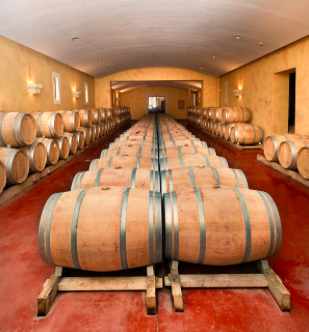 Maceration varies between 25 and 35 days, according to the batches and the tannin quality of the vintage. Elegance is the aim, so cap punching is prohibited, although the wine is pumped over regularly to extract fruit and tannin.
Maceration varies between 25 and 35 days, according to the batches and the tannin quality of the vintage. Elegance is the aim, so cap punching is prohibited, although the wine is pumped over regularly to extract fruit and tannin.
Malolactic fermentation is carried out in vats, and also in new barrels for 40% of the volume. The wine is then matured in barrels for an average of 15 months, using 40% of new barrels. Château BROWN matures its white and red wines exclusively in French oak barrels. The whites go into barrels from alcoholic fermentation and stay there on the fine lees for 8 to 10 months. The lees are stirred weekly almost throughout maturing to keep them in suspension and reveal the best of the aromas. The reds will pursue their maturing for 13 to 15 months in barrels, 40% in new barrels, 40% in one-wine barrels and 20% in two-wine barrels. The batches are tasted regularly to decide on the final blend. It is only at the end of maturing that the wines will be blended, with all the precision of Jean-Christophe Mau and Bruno Patrouilleau, for both red and white.
The rosé will be matured in one-wine barrels in our wine-cellar for a duration of 4 months, with slight stirring of the lees.

Château Brown Pessac-Léognan
Appellation: Pessac-Léognan
Terroir: Layer of gravel soil on deep clay subsoil
Production Area: 26 ha
Grape Varieties: 55% Cabernet-Sauvignon, 40% Merlot, 5% Petit Verdot
Average Age of the Vines: 24 years old
Plantation Density: 7,400 vines/hectare
Harvest: 100% manually harvested into crates and sorted on the vine, then double sorting of bunches and of the berries on a vibrating table (for Merlot) and optical sorting (for Cabernet Sauvignon)
Vinification: In 100 hl thermo-regulated steel tanks. Pre-fermentation cold maceration at 8°C for 3-5 days. Alcoholic fermentation regulated at 25°C, then at 28°C for the end of fermentation (about 15 days). Remontage in small volumes 3 times per day. Post fermentation warm maceration (30°C). Devatting after tasting each vat. Pressing of the grapes with vertical press. Malolactic fermentation in steel tanks. The vatting varies from 25 to 35 days according to the quality of the tannins. Beginning in December, the wines that have finished their malolactic fermentation are placed in barrels.
Aging: 100% in French oak barriques (1/3 new wood and 2/3 one year old) for 12-16 months, depending on the quality of the vintage. The rackings are not systematic and are done after tasting lots. The lots are separated throughout the aging process, it is not until after aging that the wines are blended.
Average Yield: 43 hl/ha
Average Production: 60,000-80,000 bottles
2016 Reviews: “Owned by the Mau family, this estate has produced an impressive wine in 2016. Ripe in swathes of black currant fruit as well as subtle, elegant tannins, it is going to age well over many years.” – 94pts, Wine Enthusiast
2014 Reviews: “A dark, explosive wine, the 2014 Brown hits the palate with tons of intensity and breadth. Black fruit, smoke, mint, leather and tobacco wrap around the huge, structured finish in a wine that brings together intense fruit with an equally imposing sense of structure.”-93pts, Vinous
Château Calon-Ségur
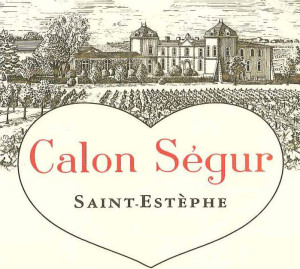
Overview
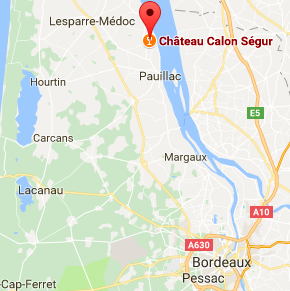
The Bordeaux wine property Calon-Ségur was named after a small river skiff used in the Middle Ages to ferry timber across the Gironde estuary. This eventually inspired the name of the district which was at one point known as Calones or St. Estèphe de Calon.
Historic records show the estate was in existence as far back as 1147 when it was owned by Monseigneur de Calon, an important bishop in the community. Eventually, the Medoc property came to be owned by Nicolas Alexandre de Ségur. After being passed from generation to generation, the estate became the property of the famous Marquis de Ségur. Marquis de Ségur was an important figure, not only for his ownership of the better Bordeaux estates of the day (Lafite and Latour), but for his long-lasting impact on the estate. He is quoted as saying “I make my wine at Lafite and Latour, but my heart is in Calon.” That famous phrase lives on in the label of Chateau Calon-Ségur, where the drawing of a heart is prominently featured on the logo.
Château Calon-Ségur was once one of the original three Bordeaux wine vineyards in St. Estèphe. In 1825, Château Montrose was a parcel of forest belonging to the Calon-Ségur estate, similar to its near neighbor-Phelan Ségur-which was also once part of the great Ségur estate. Those holdings were so vast they included not only Lafite, but also Latour and Mouton! This was in the 18th century, at which point Calon-Ségur was already an ancient estate, having been in existence for at least five hundred years.
The modern era for Chateau Calon-Ségur began in 1894 when its Medoc vineyards were purchased by Georges Gasqueton and Charles Hanappier. The Gasqueton family managed the estate until 2012. More recently, the figurehead of Calon-Ségur was the charming, albeit eccentric, Madame Denise Gasqueton. She ran the estate while marching to the beat of her own drum until she passed away at the age of 87 in late September 2011. The following year, in July of 2012, Chateau Calon-Ségur was sold for 170 million euros, or approximately 215 million dollars. The buyer was the large French Insurance company, Suravenir. Jean-Pierre Moueix, the owner of Petrus and the massive negociant company Duclot, took a minority stake in Chateau Calon-Ségur.
The style of Calon-Ségur wine is masculine and sturdy. It is tannic, structured, and traditional in its textures with a brawny body that often takes over a decade or two to become civilized.
The 131 acre Saint-Estephe vineyard of Calon-Ségur is one of the few remaining walled-in vineyards of the entire Bordeaux appellation. The vines are on average about 35 years of age, and are composed of 65% Cabernet Sauvignon, 20% Merlot, and 15% Cabernet Franc grapes. The soils are a mixture of gravel, clay, and sand. Production for Chateau Calon-Ségur is, on average, close to 20,000 cases per year. There is a second wine, Marquis de Calon. The owners also control a cru bourgeois property, Chateau Capbern Gasqueton.

Chateau Calon-Ségur Saint-Estèphe
Appellation: Saint-Estèphe. Third classified Growth in 1855.
Oenologist: Éric Boissenot
Soil: A thick layer of gravel laid down during the Quaternary Period. Predominantly clay sub-soil from the Tertiary Period. At the summit of the gravel deposits, there is also a fine layer of clay of lacustrine origin.
Vineyard Area: 55 ha (136 acres)
Planted Area: 45 ha (50 ha planted)
Grape Varieties: 53% Cabernet Sauvignon, 38% Merlot, 7% Cabernet franc, 2% Petit Verdot
Average Age of Vines: 22 years
Training Method: Double Guyot
Planting Density: 8,000 vines/ha
Target Yield: 45 hl/ha
Harvest: Manual; grapes are sorted twice, first by mechanical vibration, followed by hand sorting
Vinification: Temperature-controlled conical stainless-steel tanks. Maceration for 18 to 21 days
Aging: 17 months, 30% new barrels. Fining with egg white.
Average Annual Production: 80,000 bottles

Le C De Calon Ségur Saint-Estèphe
Overview: An integral member of the Calon Ségur family, the third wine exhibits a freshness and fruitiness geared for immediate enjoyment. It is mainly sourced from the estate’s young vines with a balanced blend made up of Merlot and Cabernet Sauvignon.
Formerly known as La Chapelle de Calon, then Le Saint-Estèphe de Calon Ségur, it took a new name with Le C de Calon Ségur since the vintage 2019. C like the third letter of the alphabet, for the third label of the estate. C like “Coeur”, the heart, symbol of the love carried by the Marquis de Ségur to the domaine, and singular distinctive sign of our bottles. C like Calon.
Appellation: Saint-Estèphe
Consulting Oenologist: Éric Boissenot
Soil: A thick layer of gravel laid down during the Quaternary Period. Predominantly clay sub-soil from the Tertiary Period. At the summit of the gravel deposits, there is also a fine layer of clay of lacustrine origin.
Vineyard Area: 55 hectares (136 acres)
Production Area: 45 hectares (50 ha planted)
Grape Varieties Planted: 57% Cabernet Sauvignon, 34% Merlot, 7% Cabernet Franc, 2% Petit Verdot.
Average Age of the Vines: 20 years old
Pruning Method: Double Guyot
Plant Density: 8,000 vines/hectare
Harvest: Hand picking. A first selection of grapes on the vine. Mechanical sorting of the grapes by vibration, followed by hand sorting.
Vinification: Temperature-controlled tronconical stainless-steel tanks. Vatting period for 18 to 21 days. Microbubbling. Co-inoculation, exogenous yeast and bacterias, in stainless steel tank at 25°C.
Aging: 16 months in 3 year barrels. Fining with egg white.
Château Camensac
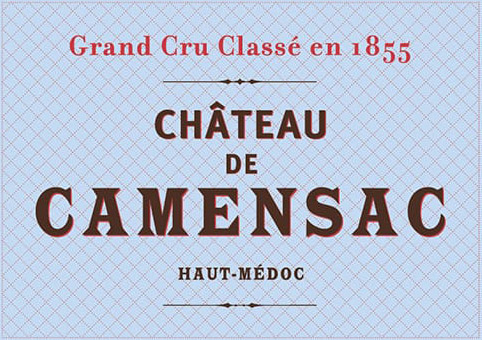
History
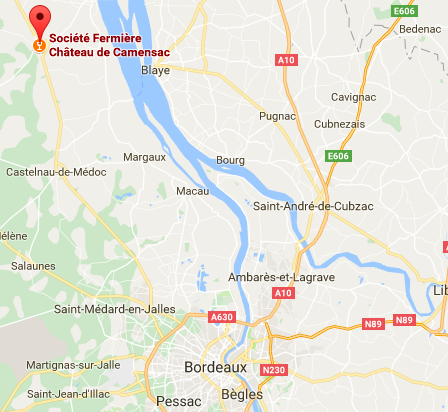
Jacques Merlaut came from a bourgeois Bordeaux family, who kept themselves rather far from the vine. In the image of Mauriac, they were more active in the judiciary and the exploitation of the Landes forest. So Jacques started by reading law. Not judging this to hold much excitement for the future, he changed direction and entered HEC, a prestigious French Business School. At the time, the French were drinking 350 litres per person per year. Jacques became a dealer in « plonk », a not very agreable expression referring to someone who sells wine without really caring much about quality. But France was thirsty.
Naturally, his offices were in Bercy, an enclave of Paris on the banks of the Seine dedicated to this type of trade. The volumes traded gave this area an exciting « trading floor » atmosphere.
Jacques had lots of fun and made a very good living. Among his friends was a very talented man of Spanish origin, with whom be got on well. Later, each returning to his roots, the first created the Taillan group, made up of several merchants in France including Ginestet in Bordeaux, backed by 450 hectares in the Médoc consisting of classed growths and the like (Chasse-Spleen and Gruaud-Larose among others). The second, Enrique Forner, created Marques de Caceres, the benchmark for Rioja throughout the world.
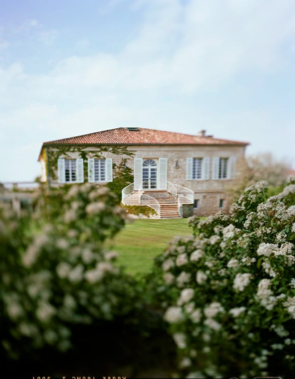 Jacques was a visionary. In the light of the seventies, he sensed that consumption trends would change to favour quality over quantity, to say nothing of the health concerns implicit in heavy individual wine consumption, which would be sure to be raised by the authorities. He invested in different properties and merchant in Bordeaux and encouraged his Spanish friend to join him there. To show the sincerity of his invitation, he proposed taking 25% of a classed growth that was on the market, the rest being reserved for his friend : Camensac. This was in 1964. Enrique Forner therefore became owner of Château de Camensac, situated in the commune of Saint-Laurent-du-Médoc, an 1855 growth in the Haut-Médoc.
Jacques was a visionary. In the light of the seventies, he sensed that consumption trends would change to favour quality over quantity, to say nothing of the health concerns implicit in heavy individual wine consumption, which would be sure to be raised by the authorities. He invested in different properties and merchant in Bordeaux and encouraged his Spanish friend to join him there. To show the sincerity of his invitation, he proposed taking 25% of a classed growth that was on the market, the rest being reserved for his friend : Camensac. This was in 1964. Enrique Forner therefore became owner of Château de Camensac, situated in the commune of Saint-Laurent-du-Médoc, an 1855 growth in the Haut-Médoc.
The two families remained in business together until Enrique decided in 2005 to withdraw from Bordeaux, and entrusted the future of the château to two members of the Merlaut family. Jean, son of Jacques, and Céline Villars-Foubet, his granddaughter. Before this, there is little information about the successive owners of Camensac. We know that a family of English origin, the Popps, held it at the time of the classification. That a noble family, de la Grandière de Tournadre, held it until its purchase by a wine merchant family from the north of France, the Cuveliers, who today own Léoville Poyferré. It was they who sol dit to Forner. Note that the first maps of France in the 17th century already reported a farmhouse at the site of the château, probably a dependency of the fiefdom of Lamarque.
The Terroir
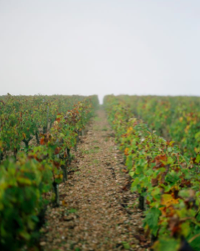 The stones that make up the bulk of the Médoc gravel soil rolled down from the mountains feeding the Garonne, the Dordogne and their tributaries. The Gironde, where these two rivers flow out, much larger than today, deposited them on limestone or clay – limestone soil when the Quaternary ice age contracte dit and reduced its bed. Their spread, prevented on the right bank by relief, was entirely on the left, the Médoc, where they encountered no rough patches. The drop in the river uncovered two deposits of gravel. The oldest (tertiary), logically furthest from the bank, eroded by a few thousand more years, is composed of fine gravel mixed with coarse sand. It is called « Villafranchian ». The most recent (Quaternary) is made of a mass of thicker and orangey (ferrous) stones, called Gunz Gravel.
The stones that make up the bulk of the Médoc gravel soil rolled down from the mountains feeding the Garonne, the Dordogne and their tributaries. The Gironde, where these two rivers flow out, much larger than today, deposited them on limestone or clay – limestone soil when the Quaternary ice age contracte dit and reduced its bed. Their spread, prevented on the right bank by relief, was entirely on the left, the Médoc, where they encountered no rough patches. The drop in the river uncovered two deposits of gravel. The oldest (tertiary), logically furthest from the bank, eroded by a few thousand more years, is composed of fine gravel mixed with coarse sand. It is called « Villafranchian ». The most recent (Quaternary) is made of a mass of thicker and orangey (ferrous) stones, called Gunz Gravel.
The north-east side of the mound of Camensac, at 23 metres, marjs the end of the layer of Gunz gravel which starts in Saint-Julien. It fades away before covering the Villafranchian gravel. It is the same as that found in Pessac-Léognan. Now these two types of soil combine their strenghts in the wine of Camensac, producing a certain north Médoc minerality and the floral accents of Pessac.
Owners: Céline Villars-Foubet & Jean Merlaut
Manager: Claire Thomas-Chenard
Oenologist: Eric Boissenot

Château de Camensac Haut-Médoc
Terroir: The style of Camensac’s wines is explained by the geographical location and the micro-climate, with mild winters and hot summers but which is also oceanic, favoring healthy growth and well-ripened grapes, combined with a deep gravel terroir, brought by the river (Villafranchian gravel as in Pessac-Léognan and Gunzian gravel as in the St Julien appellation).
Production Area: 86 hectares
Soil: Fine and deep gravel on chalky clay substratum
Grape Varieties: 60% Cabernet Sauvignon, 40% Merlot
Plant Density: 10,000 vines/hectare
Average Age of the Vines: 20 years old
Viticulture: Ploughing. Sustainable agriculture and biodynamic trials on 7 hectares. HEV 3 (High Environmental Value) certification obtained in 2021 and implementation of an agroecological programme.
Harvest: Selective manual harvests, by grape variety, the age of the vines, and the terroir. Sorting of the grapes in the vineyard, then on reception of the harvest on a sorting table.
Vinification: Destemming and crushing. Alcoholic fermentation at 28°C (about 6 days) followed by maceration (about 3 weeks). Daily pumping over and/or punching down. Run-off and pressing (pneumatic press). Transfer to barrels. Malolactic fermentation in barrels
Aging: 14-18 months in French oak barrels (60% new barrels). Regular topping up and racking. Fining with egg white and a final racking before bottling.
Tasting Notes: The wine is bright and clear with a dark color. There are recurrent aromas of black pepper and rose. The structure is fine with plenty of substance on the mid-palate. This is a balanced, powerful wine. The finish is very long, recalling the red fruit of the initial nose with well-integrated oak.
Food Pairings: Wines often go very well with food or dishes from the same region! Here are some dishes that go well with Château de Camensac: Entrecote Bordelaise, roast duck, rack of lamb, tournedos with morel mushrooms, warm dark chocolate lava cake, etc. This list of dishes is not exhaustive. It can also be served with mini-appetizers, starters or cheeses.
Average Production: 200-300,000 bottles

La Closerie de Camensac
Overview: La Closerie de Camensac is the second wine of Château Camensac.
Location: The vines are situated at the edge of the Saint-Julien appellation, in the commune of Saint-Laurent-Médoc.
Terroir: Gravelly and limestone soils
Grape Varieties: Merlot, Cabernet Sauvignon (young vines)
Harvest: Hand picked
Vinification: In stainless steel and concrete tanks (epoxy lined) with temperature control
Tasting Notes: Well-balanced and elegant, this wine reveals notes of raspberry, prune, and toasted oak.
Alcohol Content: 13%
Château Canon
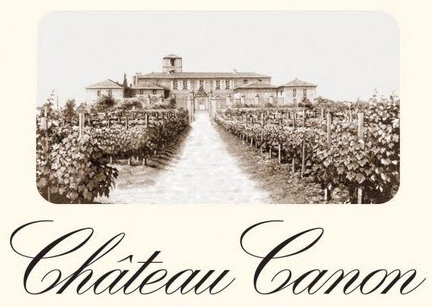
The Estate
Chateau Canon, originally known as Clos St. Martin in the 1700s, is situated at the top of the Saint-Emilion limestone plateau. In the 18th century, the vineyard was much smaller than it is today, about 13 hectares in size. In 1760, it was purchased by a privateer named Jacques Kanon, and under his management the estate was expanded and the chateau constructed. After about 10 years, he sold the estate to Raymond Fontemoing, a Bordeaux wine merchant, however his mark on the estate was forever remembered after the estate was renamed Chateau Canon in 1853.
In 1996, Canon was sold to the Wertheimer brothers, owners of Chanel. After acquiring the estate, their first goal was to replant much of the vineyard, which was in shabby condition. In addition to the sickly vines, the fascinating limestone quarries and tunnels underneath the vineyard that allow visitors to walk from chateau to neighboring chateau were also in desperate need of repair and shoring up. They hired John Kolasa (former manager of the Chanel group’s other Bordeaux property, Chateau Rauzan Segla, and their negociant company, Ulysse Cazabonne) to assume responsibility of the estate. Under his and his successor’s direction, the wine making facilities and cellars were completely replaced and modernized.

Château Canon Saint-Émilion 1er Grand Cru Classé
Location: The vineyard of Chateau Canon is located in the heart of the St. Emilion, on the top of the limestone plateau.
Terroir: Clay and limestone soils
Production Area: 31.8 hectares, including 12 hectares dedicated to Croix Canon
Exposure: South/Southwest
Grape Varieties: 70% Merlot and 30% Cabernet Franc (percentages vary depending on the vintage)
Plantation Density: Between 6,500 and 7,200 plants/ha
Average Age of the Vines: 30 years old
Harvest: The vines see leaf thinning and a green harvest, before the ripe fruit is hand-harvested into small crates and transported to the reception area. Here the grapes go over a sorting table and are destemmed before a second sorting.
Yield: 35 hl / ha
Vinification: Separate vinification, by vatting using gravity, into conical shaped stainless steel vats with a double walled system for temperature control. Malolactic fermentation takes place in new barrels (1/3) and stainless steel vats (2/3).
Aging: About 18 months in French oak barrels (70% new wood) with a medium or medium-long toasting. Racking via the bunghole.
Fining with egg whites, depending on the vintage.
Serving Suggestion: 15.5°C
Cellaring Potential: 10-15+ years
Alcohol: 13%
Tasting Notes: A subtle wine with finesse and elegance. It shows characteristic citric freshness along with pomegranate and red currant aromas. The crunchy structure of the tannins, mingled with meringue and notes of creme brulee, present us with a vintage which is already very delicious and tasty.
2013 Reviews: “Showing how Saint-Émilion came out well in 2013, this wine has ripe and juicy Merlot fruits topped with perfumed Cabernet Franc. Rich and structured, it’s a wine for aging over the medium-term with its layers of tannins under the fruit.”-92pts, Wine Enthusiast
2005 Reviews: “There is fine mineralité here, great focus, perhaps just a hint of dried blood that develops with time. The palate is medium-bodied with supple, ripe tannin. It is a very complex Saint Emilion with immense purity and style, a wine that you have to keep coming back to in order to understand…It gently lifts and fans out to a quite captivating finish…it is a quite brilliant wine.”-95pts, Wine Advocate





